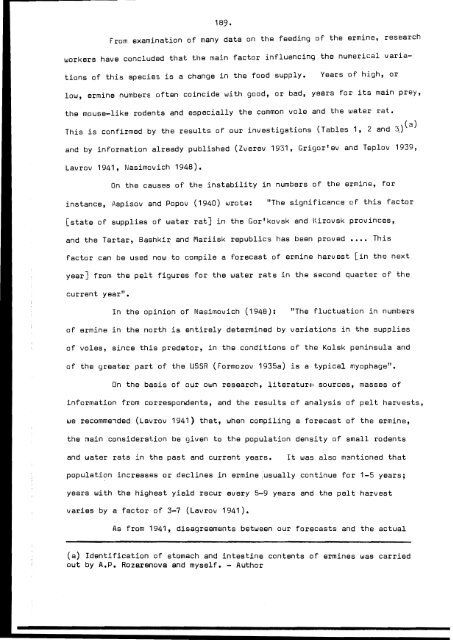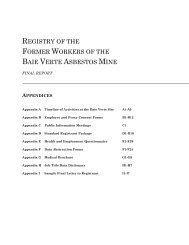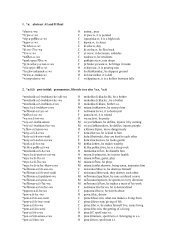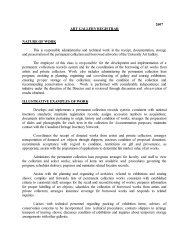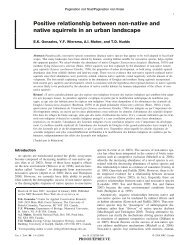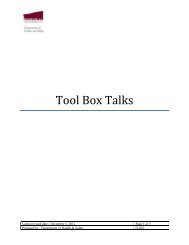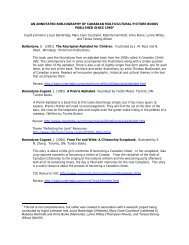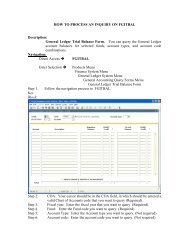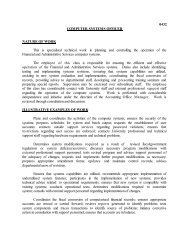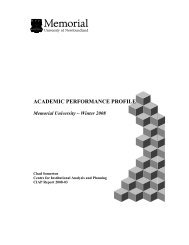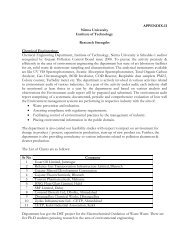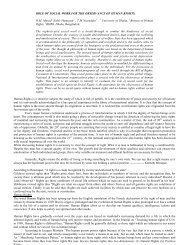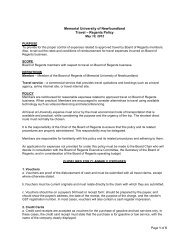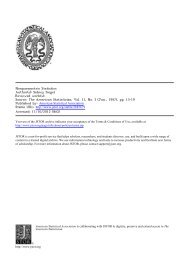You also want an ePaper? Increase the reach of your titles
YUMPU automatically turns print PDFs into web optimized ePapers that Google loves.
189. <br />
From examination <strong>of</strong> many data on the feeding <strong>of</strong> the ermine, research<br />
workers have concluded that the main factor influencing the numerical varia-<br />
tions <strong>of</strong> this species is a change in the food supply. <br />
Years <strong>of</strong> high, or<br />
low, ermine numbBr~<br />
<strong>of</strong>ten coincide with good, or bad, years for its main prey, <br />
the mouse-like rodents and especially the common vole and the water rat. <br />
This is confirmed by the results <strong>of</strong> our investigations {Tables 1, 2 and ~)(a) <br />
and by information already published (Zverev 1931, Grigor'ev and Teplov 1939, <br />
Lavrov 1941, Nasimovich 1948). <br />
On the causes <strong>of</strong> the instability in numbers <strong>of</strong> the ermine, for<br />
instance, Aspisov and Popov (1940) wrote:<br />
"The significance <strong>of</strong> this factor<br />
[state <strong>of</strong> supplies <strong>of</strong> water rat] in the Gor'kovsk and Kirovsk provinces,<br />
and the Tartar, Bashkir and Mariisk republics has been proved •••• This<br />
factor can be used now to compile a forecast <strong>of</strong> ermine harvest [in the next<br />
year] from the pelt figures for the water rats in the second quarter <strong>of</strong> the<br />
current year".<br />
In the opinion <strong>of</strong> Nasimovich (1948):<br />
"The fluctuation in numbers<br />
<strong>of</strong> ermine in the north is entirely determined by variations in the supplies<br />
<strong>of</strong> voles, since this predator, in the conditions <strong>of</strong> the Kolsk peninsula and<br />
<strong>of</strong> the greater part <strong>of</strong> the USSR (Formozov 1935a) is a typical myophage".<br />
On the basis <strong>of</strong> our own research, literaturH sources, masses <strong>of</strong><br />
information from correspondents, and the results <strong>of</strong> analysis <strong>of</strong> pelt harvests,<br />
we recomme~ded<br />
(Lavrov 1941) that, when compiling a forecast <strong>of</strong> the ermine,<br />
the main consideration be given to the population density <strong>of</strong> small rodents<br />
and water rats in the past and current years.<br />
It was also mentioned that<br />
population increases or declines in ermine usually continue for 1-5 years;<br />
years with the highest yield recur every 5-9 years and the pelt harvest<br />
varies by a factor <strong>of</strong> 3-7 (Lavrov 1941).<br />
As from 1941, disagreements between our forecasts and the actual<br />
(a) Identification <strong>of</strong> stomach and intestine contents <strong>of</strong> ermines was carried<br />
out by A.P. Rozarenova and myself. - Author


